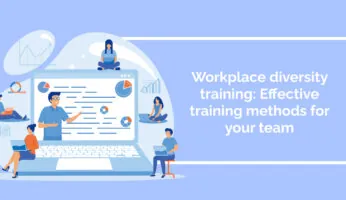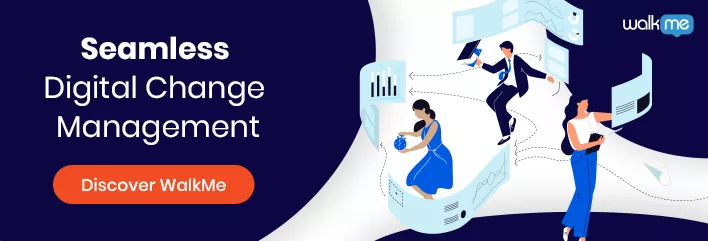
Change management communication is an essential process for cultivating success and agility within an organization. It not only helps stakeholders comprehend what changes are being made, why such modifications need to be done, and how it will influence them; it also provides timely information and materials to meet certain milestones.
It’s the responsibility of business leaders to effectively implement change management initiatives across the organization—and effective change management communication plays a pivotal role in invoking a sea of positive change. To achieve such, it will likely require change advocates to navigate the most pertinent barriers impeding transformation today. This may include undertaking change management training for leaders, or completing training courses that assist leaders in how to overcome fear of organizational conflict.
According to WalkMe, 47% of organizations undertaking change management integrations are more likely to fulfil their objectives than the other 30% that did not incorporate them.
If you are implementing any form of transformative change in your business, be it technological, managerial, or a mix of both, the provision of an effective change management communication is vital to ensuring successful progression from the current-state toward achieving an organization’s desired future-state.
What Is Change Management?
Change management can be defined as the acute implementation, development and management of change initiatives across an organisation. It is a strategic approach for undertaking the organizational and business transformation of objectives, processes or technologies.
Change management objectives prioritize the successful implementation of strategies that facilitate and provision solutions for achieving end-to-end organizational change—this includes the transformation of both external and internal processes. Change management is essential in the business world and ensures that employees are equipped with the tools, key messages, and resources to successfully adapt and maintain agility during organizational transformation.
As such, change management involves strategic planning, alterations to people processes, measuring readiness for change and establishing the actionable steps to achieve said change—this combined with other elements all working together to support personnel through their transition journey. Implementing change management practices within your organization can effectively guide employees toward their desired destination.
Change management processes provide systematic support for safeguarding against the possible failure of organizational change initiatives. Whether you are introducing a new project, system, method, initiative, or policy that could influence your business operations on a daily basis—it’s essential to have a well-defined and effective change management procedure in place to ensure consistent implementation.
Gartner reveals that the average organization has undergone five major firmwide changes in the past three years—and within the next three years, nearly 75% expect to multiply their change initiatives. However, statistics also show that 50% of change initiatives fail, with only 34% becoming a “clear success”.
The Significance of Internal Communication During Change Management
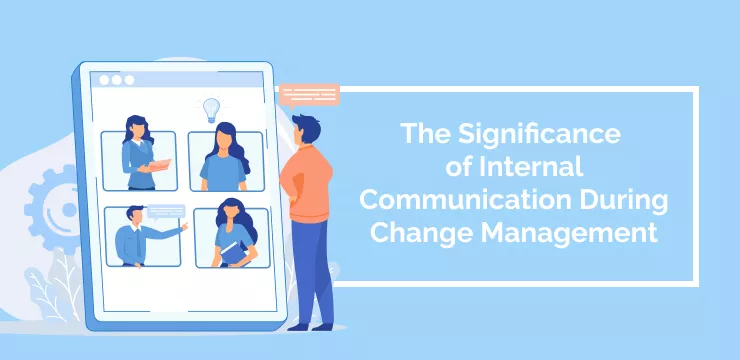
Internal communication is a key component of change management that helps organizations keep stakeholders informed about what is happening within the organization. It’s essential to communicate with executives, employees and other relevant personnel to ensure that they understand what changes are being implemented, why these changes are necessary, and how they can help contribute to the successful completion of organizational objectives.
Change management communications should be done effectively to reduce confusion or ambiguity while providing support and guidance for stakeholders whenever needed. This includes creating clear roles and responsibilities among team members, providing regular updates on progress, and offering assistance if anything needs clarification.
It is equally important for organizations to provide effective feedback mechanisms (including in-person meetings) that facilitate a flow of ideas, concerns, and suggestions that can help improve the change management process. By setting up such mechanisms, organizations can ensure that they are better prepared to handle any obstacles during the transition period while empowering employees by making them part of the decision-making process.
A McKinsey Global Survey reveals that “most organizations achieve less than one-third of the impact they expected from recent digital investments.” Additionally, the top economic performers surveyed report capturing a median of 50% of the full revenue benefits that their recent transformation could have achieved.
When managing changes, failing to communicate early carries considerable risk for businesses; with some of the most negative repercussions including:
- Wasted money and other resources
- Productivity inefficiencies
- Losing market share to your competitors
- Failure to meet new legislative regulations or requirements
- Delayed change management effort
- Reputational damage
Communicating the reasons and implications of change management with all stakeholders is essential. The following procedures should be enacted when communicating change:
- Clearly outline the importance of change across the organization and why it is imperative to enact these modifications
- Outlining the goals of the change
- Outlining how employees’ roles will be affected
- Establishing a precise timeline for when the alteration will occur is essential.
- Providing help and assistance for employees
- Ensuring open communication between employees and management, we should create a platform for them to ask questions or provide feedback.
The key to successful change management and communication is delivering timely, concise messages tailored to organizational needs throughout the entire change process. These should be easy to comprehend and remain consistent in their content from one message to another.
Official and Unofficial Leaders are the Drivers of Change
For successful organizations, it is essential that upper-level leaders’ communication obligations are clearly outlined by their supervisors. These superiors reinforce the importance of effective communication by setting expectations and holding their team accountable for distributing information and gathering insights from stakeholders.
To ensure leaders and change agents succeed, both sponsors of the change process and communication teams must agree on their respective roles. Additionally, they should strive to provide ample resources such as information, tools, training, and support to be adequately primed for incoming change.
Conduct an analysis to gather feedback from all key stakeholders, customers, employees, partners, and investors. Ask them what their needs are to reach their goals, then use the data to prioritize communication tasks that need to be done.
To avoid change management leadership challenges, ensure everyone is on board with the plan and that expectations are managed to avoid potential conflicts or misunderstandings. Check in with stakeholders regularly to ensure they are satisfied with the process and that any issues are being addressed promptly.
It’s important to ensure communication is a two-way street. Organizations must proactively listen to employees and other stakeholders to pick up on any feedback or concerns that could affect the change process. This allows organizations to make necessary adjustments and continuously improve the entire change management experience for everyone involved.
Businesses can drastically reduce the risks associated with such changes by investing time and energy into effective communication during organizational transitionary periods. This allows organizations to increase their chances of achieving successful outcomes and maintaining long-term sustainability.
Organizations must clearly understand what criteria will be used to track progress before, during, and after the change. This involves setting up a series of checkpoints or milestones that can be collected and reviewed to ensure the process is on track toward achieving its desired end result.
This data should then inform future changes by providing insight into potential problems, concerns, and suggestions that can help improve the change management process. By collecting and analyzing feedback from stakeholders, companies can make informed decisions that help ensure the successful implementation of organizational change.
By employing effective communication strategies throughout their change management processes, businesses can ensure they are taking the necessary steps to achieve their desired end goals. This helps them provide a better experience for all stakeholders—from employees to upper-level executives—and significantly increases their chances of success. In the long run, this leads to a more efficient and sustainable organization that is well-equipped for future change.
4 Key Elements Of Change Management Communication
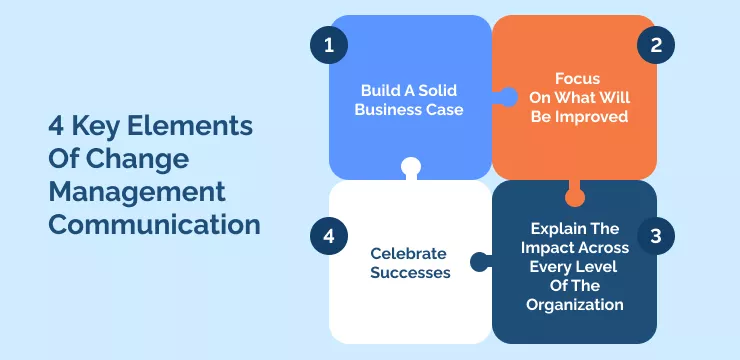
The following elements are key to successful change management communication:
- Build A Solid Business Case
Convincing stakeholders of your project’s value comes down to a strong business case. When engaging with decision-makers, accentuate the key points in your business plan to win buy-in and approval.
- How does the change add value to the organization?
- What is the expected ROI?
- What is the impact on productivity?
- Focus On What Will Be Improved
Although a solid business argument can convince stakeholders, the rest of your team may need more than just cost savings or enhanced efficiency. To truly invigorate and inspire those within and beyond your organization, focus on how their lives will become better with these changes:
- In what ways can this make people’s work more efficient?
- Will it save time?
- How does it surpass the previous system or process?
- What can be done with the new system that the old system couldn’t?
- Explain The Impact Across Every Level Of The Organization
Research shows that employees are often reluctant to change and company-wide transformations can generate fear that their roles could be detrimentally affected.
To mitigate these worries, it is essential to inform them of the advantages of shifting change and exhibit transparency about its timeline and effect on each division or team. Transparency combined with factual data will create an atmosphere of ease among personnel during times of transition.
Common Change Management questions users may have include:
- What effect could this shift have on my responsibilities and teammates?
- What are the details of what is changing?
- When can we expect the change to take place?
- What resources can I access to ensure a successful transition?
- Celebrate Successes
Lastly, don’t forget to commemorate your successes as you strive to establish and maintain the momentum of your project. With more extensive changes, it may be hard for employees to see how the project has affected them directly. Still, amplifying regular victories is essential to demonstrate progress and remind people that their effort is worth it.
As a part of your communication strategy, be sure to give updates on the following:
- Reaching a major milestone
- Achieving project goals
- Triumphs of collaborative and individual efforts
Understanding Change Management and Communication are Inseparable Entities
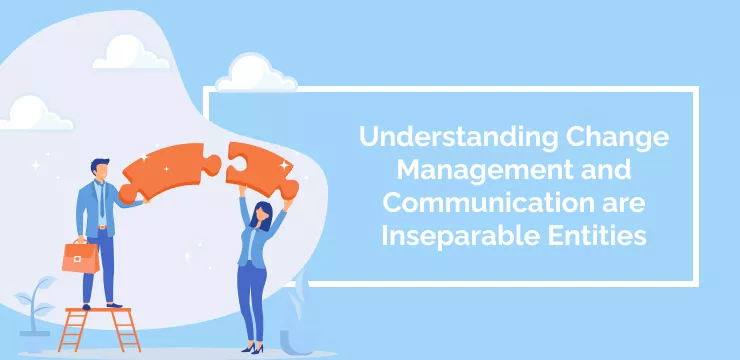
ACMP’s Standards for Change Management is an all-encompassing method-neutral framework that professional change leaders use to strategize and bring about organizational changes with utmost precision. It’s a critical resource since it pinpoints the impacts of any transformation across all departments, considers how this will affect personnel, and details the strategies needed to help businesses reach their objectives.
The approach illustrates what key information needs to be documented and suggests communication plans for each change initiative. It also advises on how to stress the importance of the transition and establish a team dedicated to managing the process.
By following this protocol, businesses can ensure that their change management plans are successful while ensuring they remember all crucial details in the process. It provides them with a reliable structure for communicating changes, as well as offering step-by-step advice and templates that can be tailored to their needs.
Ultimately, internal communication is essential for organizations hoping to see success when implementing change management initiatives. By taking advantage of appropriate tools like The Standard for Change Management and tailoring content fit for their audience, businesses can ensure that these changes are managed effectively and efficiently.
This will ultimately lead to improved organizational health and an increased ability to remain competitive in the market.
How To Create A Communication Strategy For Change Management
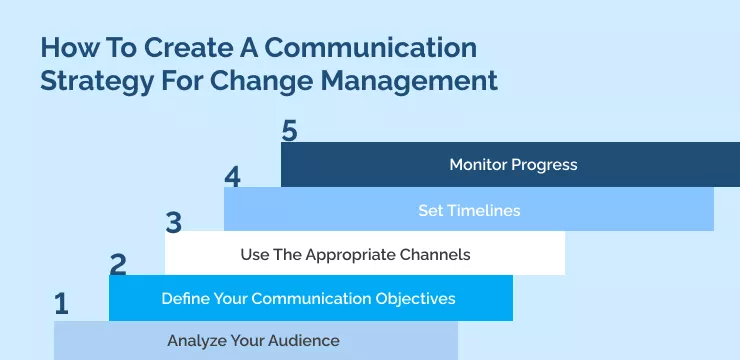
Your change management communication strategy should consider the following:
1. Analyze Your Audience: When communicating changes, you need to be aware of your audience’s needs and interests, so it’s important to identify their roles, level of expertise, understanding of the topic, and any other relevant information that can help tailor your communication.
2. Define Your Communication Objectives: You need to clearly understand what goals you are trying to attain through internal communication during change management initiatives. What do you want to communicate? What messages do you want people to understand? Once this is established, you can develop an effective plan for disseminating the messages.
3. Use The Appropriate Channels: When communicating changes, choosing the proper communication channels is essential. Depending on your audience, consider using emails, webinars, newsletters, intranet messages, and other digital delivery platforms.
4. Set Timelines: Communication should occur before, during, and after changes are implemented to ensure successful change management. Before implementing a change process, timely announcements must clearly explain what will happen and when.
During this transition period, frequent updates should be provided that describe progress or any potential obstacles that may have been encountered along the way. After all, changes have been successfully incorporated into the organization’s operations or workflow processes.
A follow-up message should be sent to thank everyone for their assistance and cooperation while outlining any successes or lessons learned from the experience.
5. Monitor Progress: To ensure your communication plan is successful, it’s essential to monitor progress by asking questions, seeking feedback, and having regular check-ins with all stakeholders involved in the project. This will help you adjust your strategy if needed for maximum effectiveness.
Change management can be challenging for organizations when communication needs to be managed correctly. By following these tips, you can create an effective internal communications strategy that will help you save time and resources during change management initiatives.
With an effective communication strategy, you can successfully manage changes more quickly and efficiently while ensuring employee buy-in and meeting organizational goals.
Change Management Communication Best Practices
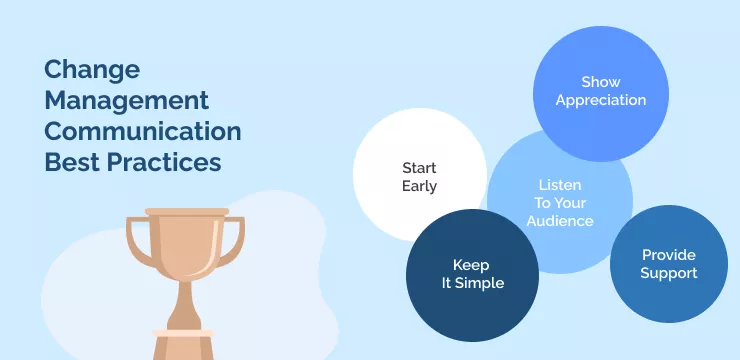
To ensure your communication strategy is successful, there are some best practices to keep in mind when communicating changes:
1. Start Early
Communication should begin well before any changes are implemented so stakeholders have time to process and understand the scope of the project.
2. Keep It Simple
Don’t overload people with too much information or too many details. Keep messages concise and clear while still conveying all relevant information.
3. Listen To Your Audience
When communicating changes, listening to your audience’s feedback and making adjustments based on their responses is important. This will help ensure everyone is on board with the change before it’s implemented.
4. Show Appreciation
Show your appreciation for employees’ efforts and cooperation during change management initiatives. This will help build trust and create a positive atmosphere for successful changes in the future.
5. Provide Support
Change can be difficult, so provide support resources when needed. This could include training materials, job aids, or other helpful tools that can assist with implementing the project seamlessly.
By following these best practices, you can ensure an effective communication strategy is being implemented throughout your organization during change management initiatives.
Follow-up activities should also be considered once changes have been successfully implemented to ensure they are sustained over time. Ongoing feedback sessions or surveys may be conducted to determine if any additional adjustments need to be made and how successful the change management process was.
Change Management & Digital Transformation In 2023

As more organizations embrace digital transformation in 2023, effective change management strategies are essential. Organizations must understand how to communicate changes effectively with their employees and stakeholders to ensure successful digital transformations.
To do so, companies should create a comprehensive communication strategy that outlines how they will communicate before, during, and after the change process. This strategy should include clear objectives, target audiences, and, most importantly—measurable results. Additionally, monitoring progress throughout the process is crucial by asking questions and seeking feedback from all stakeholders involved.
By doing this, organizations can ensure that they have successfully implemented changes while ensuring employee buy-in and meeting organizational goals. With an effective change management strategy, organizations can successfully navigate digital transformation and prepare for a successful future.
What’s Next For Change Management Communication?
Change management is an essential part of any organization’s digital transformation journey. By following these best practices and creating a comprehensive communication strategy, organizations can manage changes effectively while ensuring employee buy-in and meeting organizational goals. With the right strategy in place, 2023 will be an exciting year for digital transformations.
As technology continues to evolve, so should the way organizations communicate changes and manage change management initiatives. By implementing these tips throughout your organization, you will find that change management initiatives will become smoother and more successful – resulting in better overall performance and satisfaction from all parties involved.
Organizations can leverage digital tools such as chatbots, AI-enabled communication platforms, and automated scheduling software to streamline the process and maintain effective communication throughout the project.
Moreover, organizations can also use data-driven insights to track employee sentiment during change management initiatives and better understand how they respond to changes to optimize future strategies.
By following the strategies outlined in this article, you can ensure effective communication throughout your organization during change management initiatives and successfully manage changes more quickly and efficiently while ensuring employee buy-in and meeting organizational goals.
WalkMe Team
WalkMe spearheaded the Digital Adoption Platform (DAP) for associations to use the maximum capacity of their advanced resources. Utilizing man-made consciousness, AI, and context-oriented direction, WalkMe adds a powerful UI layer to raise the computerized proficiency, everything being equal.

